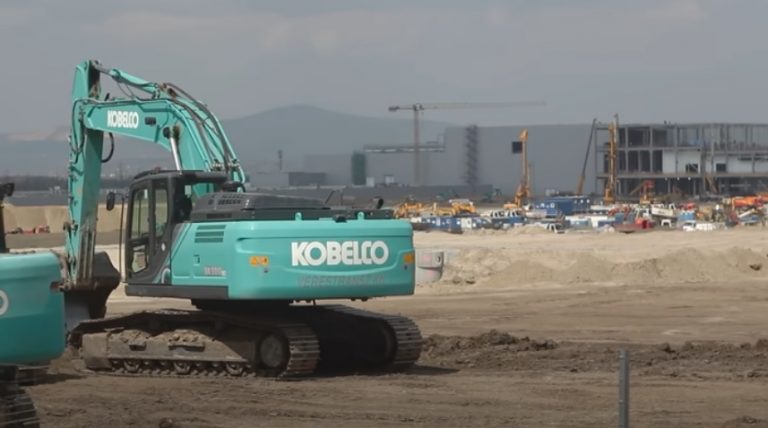Based on air pollution data, the Samsung factory in Göd released an extremely large amount of 88 tons of toxic solvents into the air between 2019 and 2022, Átlátszó revealed. They write that both the amount of toxic substances emitted by the factory and the tests within the factory prove that the company is unable to meet even the most basic environmental and occupational safety requirements.
The air pollution data of the city of Göd and the Samsung factory in 2021 and 2022 show that Göd’s air is significantly burdened by the operation of the battery factory, for example, the amount of carbon dioxide increased sevenfold compared to 2018. But the really worrying number is the release of N-methyl-2-pyrrolidone (NMP), a toxic organic solvent used in electrode production.
N-methyl-2-pyrrolidone is used as an organic solvent in various production technologies (petrochemistry, pharmaceutical industry, surface treatment), but in Göd it is only found in large quantities in the battery factory.
The substance is classified as harmful to reproduction, and its inhalation is primarily a danger to pregnant women: long-term exposure to NMP can cause miscarriage or abnormal development of the fetus.
Between 2019 and 2022, a total of 88 tons of this fetus-damaging solvent was released into the air in Göd.
According to Samsung’s measurements, the emission of air pollutants did not exceed the prescribed limit values. However, the document also reveals that the emission limit value required by law was not applied to the NMP in the battery factory in Göd.
26/2014. (III. 25.) VM decree states that in the case of “exhaust gas relating to substances with carcinogenic, mutagenic or reproductive toxicity” the emission limit value is 2 mg/m3.
However, the emission limit value of 150 mg/m3 was prescribed for all air pollution point sources emitting NMP in the Göd factory. Although the much lower limit value of 2 mg/m3 should have been applied to the tail gas stacks of wet gas scrubbers (solvent recoverers).
debreceninap.hu


















